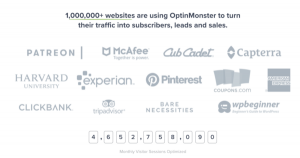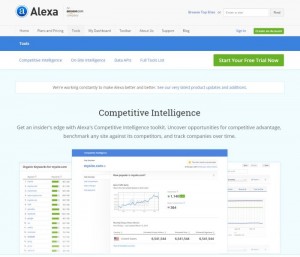Discover how to balance AI with human creativity when creating B2B content to achieve greater marketing success.
Whether you’re for it or against it, AI is everywhere nowadays. Artificial intelligence has become integral to our daily lives — from chatbots and voice assistants to recommendation algorithms and personalized ads. It’s no wonder that the business world, especially B2B marketing, is buzzing with excitement over the potential of AI.
But some naysayers say it’s cheating, plagiarizing and killing the creative process. Why are those same people also okay with using other AI-driven tools like Grammarly, Descript and even HubSpot?
Why is AI okay sometimes but not others? In my opinion, it’s always okay — when used ethically. It shouldn’t create 100% of your content, but it can be part of your content creation.
Before we jump in, let’s establish one thing: AI is a game-changer, but it’s not a magic wand. Content creation still requires the invaluable human element. So, let’s look at how it can be bettered by artificial and human intelligence working together.
1. Data-driven insights for targeted content
Imagine having a crystal ball that reveals the preferences and needs of your target audience. AI algorithms can provide just that! You can tap into giant data pools and extract valuable insights by leveraging AI-powered tools.
Using natural language processing, AI can analyze customer feedback, social media conversations and market trends to identify patterns and preferences. These insights enable you to create highly targeted and relevant content that resonates with your audience. When you understand their pain points, interests and desires, you can tailor your messaging and deliver the right content at the right time.
2. Automated content generation
We all know that content creation can be time-consuming. That’s where AI steps in to lend a helping hand. AI-powered content generation tools can automate repetitive tasks and save you precious time.
They can produce data-driven articles, reports or product descriptions based on predefined parameters. They can even help in your social media marketing efforts. Have a webinar transcript you want to turn into some social posts? Use AI to extract the key takeaways in seconds.
These tools quickly sift through large volumes of data, identify relevant information and generate initial drafts. But remember that they are drafts, not finished product. They need the human touch to make them connect brand and customer. AI can handle the heavy lifting, but a person is needed to ensure quality and brand consistency.
3. Enhancing personalization efforts
Personalization is the secret sauce that makes your content stand out. AI can be your personalization ally by analyzing user behavior, browsing history and demographic data. This information helps AI algorithms deliver personalized content recommendations and tailored experiences.
Let’s say you have a website visitor interested in your software solutions. AI-powered recommendation engines can suggest relevant blog posts, whitepapers, or case studies that align with their interests.
Imagine reading an article on project management software, and everything on that page is personalized to your needs and pain points and guides you to the obvious next step in your software search. This level of personalization improves engagement, drives conversions and builds stronger connections with your audience.
4. Streamlining content editing and optimization
AI-powered tools like Grammarly can be your virtual writing assistant, providing automated grammar and spelling suggestions. They save you time and help catch those sneaky typos or grammar slip-ups that undermine credibility.
Additionally, they can analyze content performance. Examining click-through rates, engagement metrics and conversion rates gives insights into what works and needs improvement. This data helps you optimize your content strategy, refine messaging and deliver more impactful content to your audience.
5. Voice assistants and audio content
With the rise of voice assistants and audio content, AI has opened up a world of exciting possibilities for engaging with your audience. One of these opportunities is optimizing your content for voice search. AI-driven voice search patterns can be your secret weapon in creating content that aligns perfectly with how people speak when using voice-enabled devices.
Let’s break it down with an example. Imagine you run a digital marketing agency specializing in B2B lead generation. You want to create a blog post that answers the question, “How can I generate more leads for my B2B business?” To optimize it for voice search, you need to understand how people ask questions verbally.
Instead of focusing solely on traditional keyword optimization, you incorporate conversational language and relevant long-tail keywords. So, your blog post title might become “Proven Strategies to Boost B2B Lead Generation: How Can I Generate More Leads for My Business?”
When someone asks their voice assistant the very question you’ve addressed in your blog post, they might hear your expert advice right in the response. Talk about being in the right place at the right time! By tailoring your content to match people’s natural language when speaking, you increase your chances of appearing in voice search results.
But it doesn’t stop there. AI-powered transcription services take it further by converting audio or video content into text. This means that even if you create a podcast episode or a webinar, you can make it accessible and searchable.
By providing a written transcript of your audio content, you open the doors to a broader audience. People who prefer reading or those who are hard of hearing can engage with your content, while search engines can easily index and rank it for SEO purposes.
Best AI tools for your content creation process
The world of AI tools for content creation is huge and ever-evolving. While this list isn’t exhaustive, it is a starting point to introduce you to some helpful AI-powered tools that can elevate your content creation process.
- Grammarly: An AI-powered writing assistant that helps you eliminate grammar and spelling errors, ensuring your content is polished and error-free.
- Clearscope: This tool uses AI to analyze content and provides keyword recommendations to improve SEO. It helps you optimize your content for better search engine visibility and higher rankings.
- Frase: Frase utilizes AI to generate content briefs and outlines based on specific topics or keywords. It saves time by providing a starting point for your content creation and research process.
- Wordsmith: This AI platform transforms raw data into human-like narratives. It can automatically generate personalized reports, product descriptions, or news articles, making content creation more efficient.
- Acrolinx: Acrolinx uses AI to ensure consistency in your content by analyzing tone, style and brand guidelines. It helps maintain a cohesive brand voice across all your written materials.
Finding harmony: Embracing AI in content creation at your comfort level
Having reservations about embracing AI in your content creation process is understandable. The fear of the unknown or the concern that AI might replace the human touch is valid. However, it’s essential to recognize that integrating AI into your workflow doesn’t mean relinquishing control or creativity. Remember, AI is a tool that amplifies our capabilities as marketers.
The key is finding the level of AI integration you’re comfortable with. Start small and gradually incorporate AI-powered tools and techniques into your content creation process. You can decide how much or how little you want AI to assist you.
Content creation is an art. Humans bring a unique perspective, creativity and emotional intelligence to the table. AI cannot replicate the depth of human experiences, emotions and intuition. By infusing AI with our creativity and expertise, we can leverage its capabilities while preserving the authenticity and value only humans can offer.
So, feel free to explore the possibilities of AI in your content creation process. Start by experimenting with AI-powered tools that align with your goals and needs. Embrace the ones that enhance your productivity and efficiency. Always remember you have the final say in shaping your content.
The goal is to find harmony between AI and human creativity, striking a balance that allows you to leverage the best of both worlds. With the right mindset and approach, AI can become your ally, helping you achieve greater success in the dynamic landscape of B2B marketing.
The post 5 ways to harness AI in B2B content creation appeared first on MarTech.
MarTech(8)




